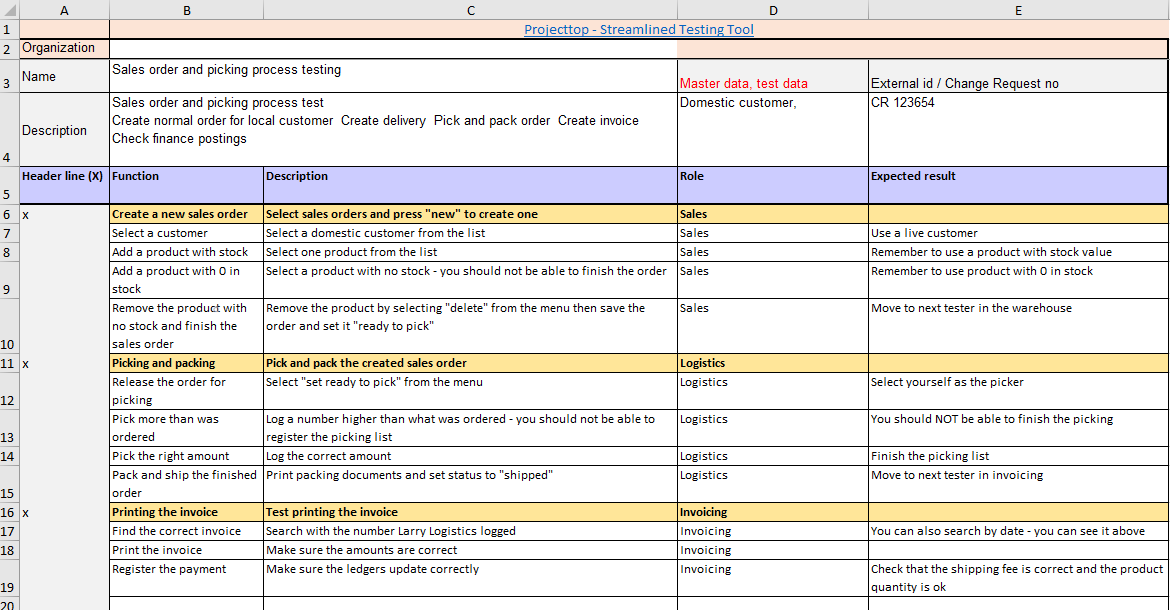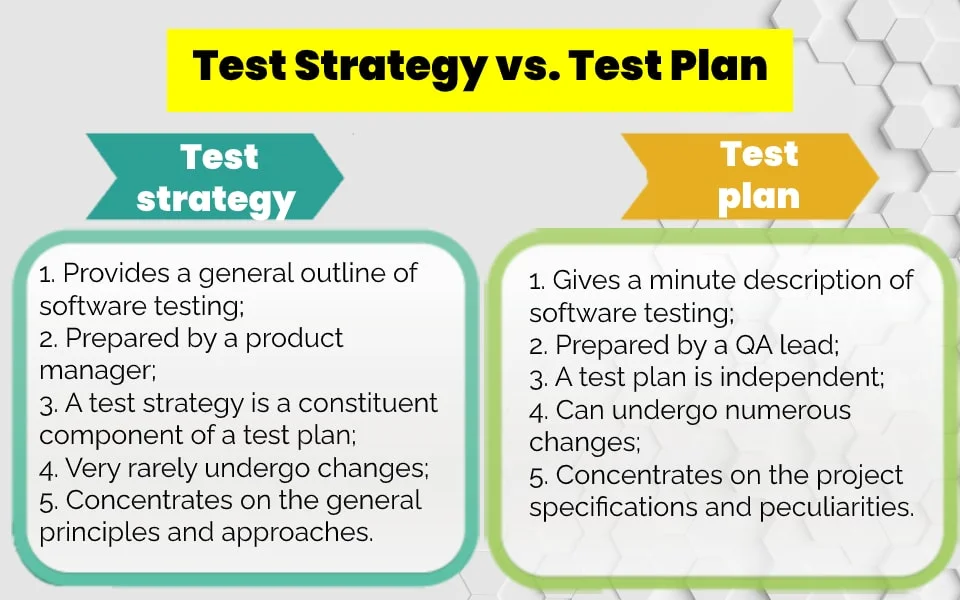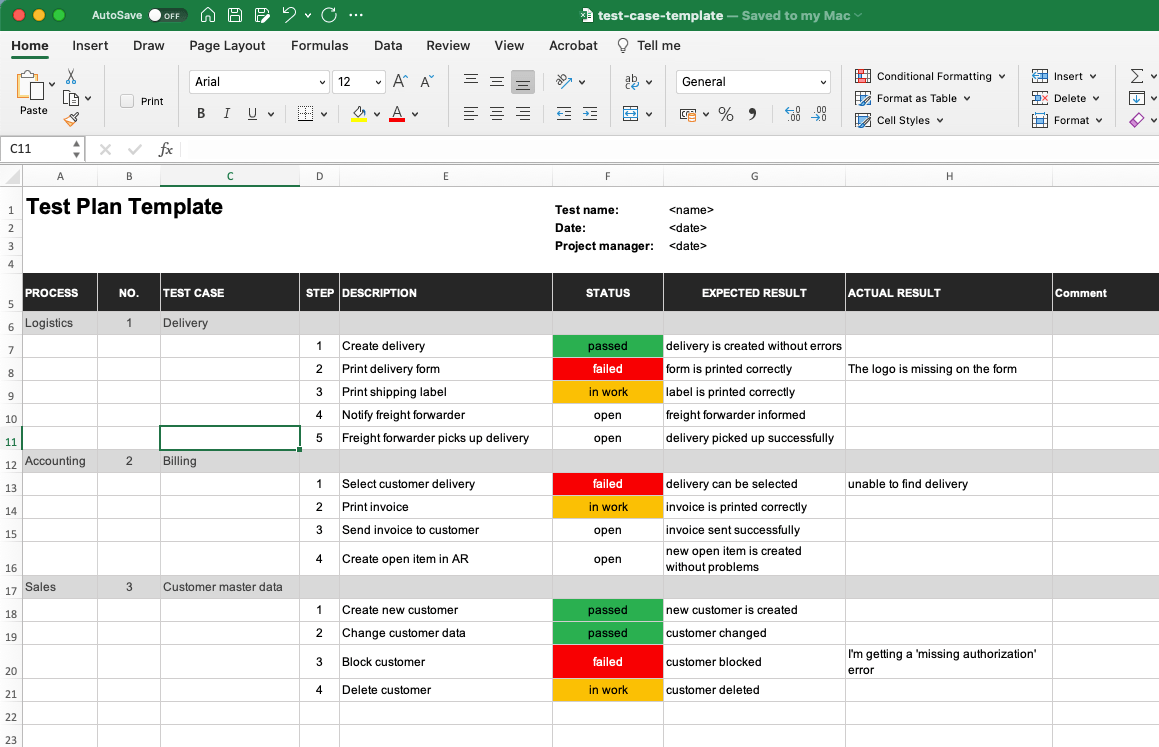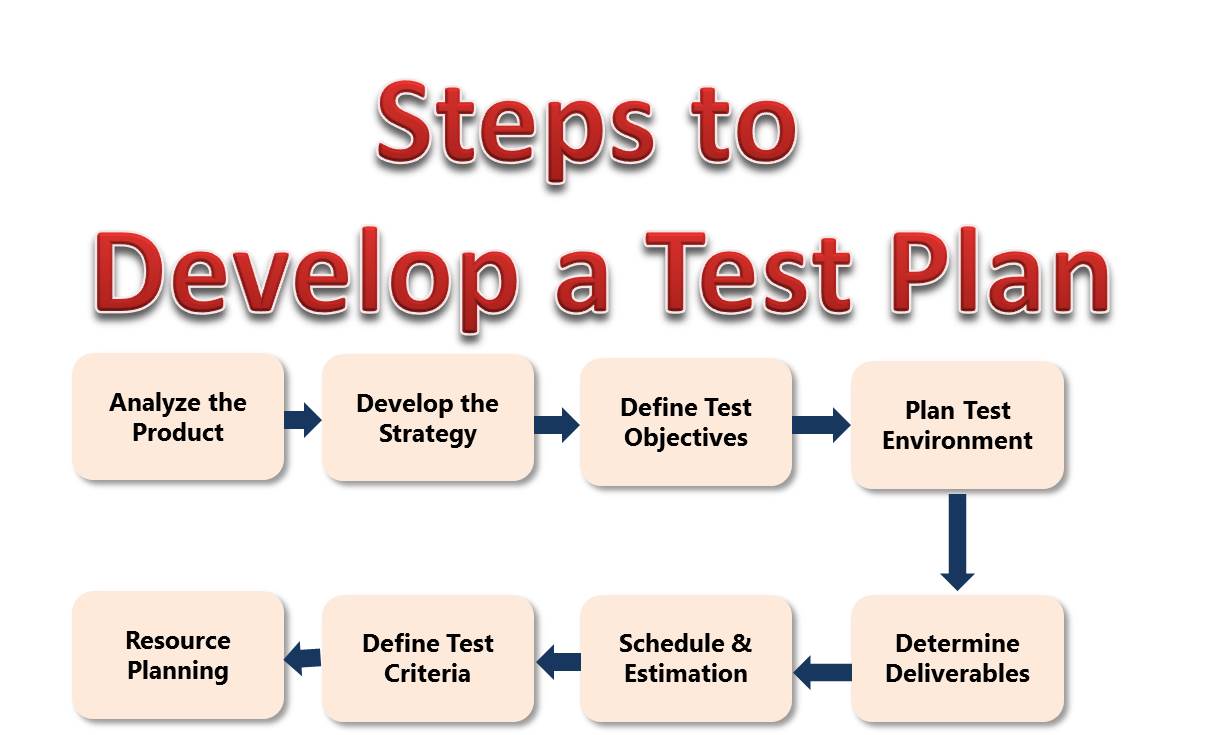How to write a software test plan – Delving into the intricacies of software testing, this guide provides a comprehensive roadmap for crafting an effective software test plan. By outlining the key components, best practices, and potential pitfalls, we aim to empower you with the knowledge and skills necessary to ensure the quality and reliability of your software products.
Software testing is a crucial phase in the development lifecycle, serving as a gatekeeper for quality and a guardian against potential defects. A well-defined test plan serves as the foundation for successful testing efforts, guiding the team through the entire process.
– Explain the importance of a software test plan, including the benefits of creating a comprehensive test plan.

A software test plan is a critical document that Artikels the strategy and approach for testing a software application. It serves as a roadmap for the testing team, ensuring that testing is conducted in a systematic and organized manner. Creating a comprehensive test plan offers several benefits, including:
Improved Test Coverage: A well-defined test plan ensures that all aspects of the software application are thoroughly tested, reducing the risk of defects slipping through the cracks.
Reduced Testing Time: By planning and organizing the testing process, teams can avoid duplication and redundancies, leading to faster and more efficient testing.
Enhanced Test Quality: A comprehensive test plan establishes clear criteria and standards for testing, ensuring that tests are conducted consistently and effectively.
Improved Communication: A well-documented test plan facilitates communication between the testing team and other stakeholders, ensuring that everyone is aligned on the testing goals and approach.
Purpose and Scope

A software test plan serves as a guiding document that Artikels the strategy and approach for testing software applications. It defines the objectives, scope, and activities involved in the testing process, ensuring a structured and efficient approach.
The purpose of a test plan is to provide a clear understanding of the following:
- The objectives of testing, including the specific goals and desired outcomes.
- The scope of testing, including the areas of the software to be tested and the depth of testing to be performed.
- The testing approach, including the methodologies, techniques, and tools to be used.
- The resources required for testing, including the personnel, equipment, and time.
- The schedule for testing, including the start and end dates, milestones, and dependencies.
By defining the purpose and scope of testing, the test plan establishes a framework for the entire testing process. It ensures that all stakeholders have a clear understanding of the goals, expectations, and constraints of the testing effort.
Test Objectives
The test objectives define the specific goals and desired outcomes of the testing effort. They provide a clear understanding of what the testing aims to achieve and help ensure that the testing activities are aligned with the overall project objectives.
Well-defined test objectives enable stakeholders to assess the effectiveness of the testing process and make informed decisions about the project’s progress and deliverables.
Types of Test Objectives
- Functional Objectives: These objectives focus on verifying that the software meets the functional requirements and specifications. They ensure that the software performs as intended and delivers the desired functionality.
- Non-Functional Objectives: These objectives assess the software’s non-functional attributes, such as performance, reliability, usability, and security. They ensure that the software meets the quality standards and user expectations.
- Exploratory Objectives: These objectives guide exploratory testing, which involves investigating the software’s behavior beyond the predefined test cases. They help identify potential issues and gain a deeper understanding of the software’s functionality.
– Test Strategy

A well-defined test strategy is the backbone of a comprehensive software test plan. It Artikels the overall approach to testing, including the types of testing to be performed, roles and responsibilities of team members, and the criteria for passing or failing tests.
A sound test strategy ensures that testing is conducted efficiently and effectively, maximizing test coverage and minimizing the risk of defects escaping into production.
Approach to Testing
The test strategy should clearly define the types of testing to be performed, such as functional testing, performance testing, security testing, and usability testing. It should also specify the techniques to be used, such as black-box testing, white-box testing, and exploratory testing.
Roles and Responsibilities
The test strategy should clearly define the roles and responsibilities of team members involved in testing. This includes the roles of test engineers, developers, and project managers.
Test Environment and Resources
The test strategy should specify the test environment and resources required, including the hardware, software, and network configuration. It should also identify any dependencies or constraints that may impact testing.
Criteria for Passing or Failing Tests
The test strategy should establish clear criteria for passing or failing tests. This may include specific performance metrics, functional requirements, or user experience goals.
Defect Reporting and Tracking
The test strategy should define the process for reporting and tracking defects. This includes the use of a defect tracking system, the assignment of priorities, and the process for resolving defects.
Regression Testing and Maintenance Testing
The test strategy should plan for regression testing to ensure that changes to the software do not introduce new defects. It should also plan for maintenance testing to ensure that the software continues to meet its requirements over time.
Automation
The test strategy should consider incorporating automation into the testing process to improve efficiency and reduce the risk of human error. This may include the use of automated testing tools or the development of custom test scripts.
Testing Schedule and Timeline
The test strategy should create a testing schedule and timeline that Artikels the start and end dates of each testing phase. This schedule should be realistic and take into account the resources and dependencies involved.
Communication Plan
The test strategy should establish a communication plan for sharing test results and updates with stakeholders. This plan should include the frequency and format of communication, as well as the responsibilities of each stakeholder.
Risks and Mitigation Strategies
The test strategy should identify potential risks related to testing and define mitigation strategies to address them. This may include risks such as schedule delays, resource constraints, or technical challenges.
Testing Best Practices and Methodologies
The test strategy should include a section on testing best practices and methodologies. This may include guidance on test design techniques, test execution strategies, and defect analysis techniques.
Test Management Tools and Techniques
The test strategy should provide guidance on the use of test management tools and techniques. This may include the use of test management software, defect tracking systems, and test automation tools.
Continuous Improvement
The test strategy should include recommendations for continuous improvement in the testing process. This may include regular reviews of the test strategy, the adoption of new testing tools and techniques, and the training of team members on best practices.
Test Environment

The test environment is a crucial aspect of software testing as it provides the infrastructure and resources necessary to execute test cases effectively. Defining the test environment helps ensure consistency, accuracy, and reliability in testing.
A well-defined test environment specifies the hardware, software, and network requirements for testing. It includes details on the operating system, hardware configuration, network topology, and any other relevant infrastructure components. This ensures that the testing team has the necessary resources to conduct tests effectively.
Hardware Requirements
– Specify the minimum and recommended hardware requirements for the test environment, including processor speed, memory, storage capacity, and any specialized hardware (e.g., graphics card, network interface card).
– Consider the performance and scalability requirements of the software under test to determine appropriate hardware specifications.
Software Requirements
– List the operating system, software dependencies, and any other software components required for testing.
– Ensure that the test environment has the necessary software tools and utilities for executing test cases, such as test management tools, debugging tools, and performance monitoring tools.
Network Requirements
– Define the network topology, bandwidth, and latency requirements for the test environment.
– Consider the network connectivity and security requirements of the software under test, and ensure that the test environment provides a realistic representation of the production environment.
Setup and Configuration
– Provide detailed instructions on how to set up and configure the test environment, including hardware installation, software installation, network configuration, and any necessary security measures.
– Document any scripts or automation tools used for environment setup and configuration to ensure consistency and repeatability.
Test Cases
Test cases are specific scenarios that are used to test the functionality of a software application. They are designed to ensure that the application meets its requirements and that it is free of defects. A comprehensive list of test cases is essential for ensuring the quality of a software product.
When designing test cases, it is important to consider the following factors:
- The requirements of the software application
- The different types of users who will be using the application
- The different ways in which the application can be used
Once the test cases have been designed, they should be executed and the results should be recorded. The results should be analyzed to identify any defects in the software application. These defects should then be fixed and the test cases should be re-executed to ensure that they have been fixed.
List of Test Cases, How to write a software test plan
The following is a list of test cases that can be used to test a software application:
- Test the functionality of the application’s main features.
- Test the application’s performance under different load conditions.
- Test the application’s security features.
- Test the application’s usability.
- Test the application’s compatibility with different operating systems and browsers.
Expected Results
The following are the expected results for each of the test cases:
- The application’s main features should function as expected.
- The application should perform well under different load conditions.
- The application’s security features should prevent unauthorized access to the application.
- The application should be easy to use.
- The application should be compatible with different operating systems and browsers.
Test Execution: How To Write A Software Test Plan

Test execution is the process of running the test cases and comparing the actual results with the expected results. It is a critical phase in the testing process, as it helps to identify any defects or bugs in the software.
The process of test execution can be divided into the following steps:
- Plan the test execution: This involves determining the resources (e.g., testers, environment, tools) required for test execution and scheduling the tests.
- Prepare the test environment: This involves setting up the necessary hardware, software, and data to run the tests.
- Execute the test cases: This involves running each test case and recording the actual results.
- Analyze the test results: This involves comparing the actual results with the expected results and identifying any discrepancies.
- Report the test results: This involves documenting the test results and communicating them to the stakeholders.
Responsibilities of the Testers
The testers are responsible for the following tasks during test execution:
- Executing the test cases according to the test plan.
- Recording the actual results of the tests.
- Analyzing the test results and identifying any discrepancies.
- Reporting the test results to the stakeholders.
Test Case Execution Table
The following table provides a sample of a test case execution table:
| Test Case ID | Test Case Description | Test Data | Expected Results | Actual Results | Status (pass/fail) |
|---|---|---|---|---|---|
| TC-001 | Verify that the user can log in to the system. | Username: admin, Password: password | The user is logged in to the system. | The user is logged in to the system. | Pass |
| TC-002 | Verify that the user can create a new account. | Username: newuser, Password: newpassword | A new account is created. | An error message is displayed. | Fail |
Test Case Reporting
The test results should be documented in a test report. The test report should include the following information:
- The purpose of the test
- The scope of the test
- The test cases that were executed
- The actual results of the tests
- The expected results of the tests
- Any discrepancies that were found
- The conclusions of the test
Test Case Closure
A test case is considered closed when the following criteria are met:
- The test case has been executed.
- The actual results of the test have been recorded.
- The test results have been analyzed.
- Any discrepancies have been identified.
- The test results have been reported to the stakeholders.
Final Thoughts

In conclusion, creating a comprehensive software test plan is a multifaceted endeavor that requires careful planning, attention to detail, and a collaborative approach. By following the principles Artikeld in this guide, you can develop a robust test plan that will lay the groundwork for successful software testing and ultimately enhance the quality and reliability of your software products.
FAQ Resource
What is the purpose of a software test plan?
A software test plan defines the scope, objectives, and approach for testing software, ensuring a structured and efficient testing process.
What are the key components of a software test plan?
Key components include test objectives, test strategy, test cases, test environment, and test schedule.
How do I write effective test cases?
Effective test cases should be clear, concise, and cover a wide range of scenarios, including positive and negative tests.
What are the different types of software testing?
Common types of software testing include functional testing, performance testing, security testing, and usability testing.
What is the role of automation in software testing?
Automation can streamline testing processes, reduce human error, and increase test coverage.

